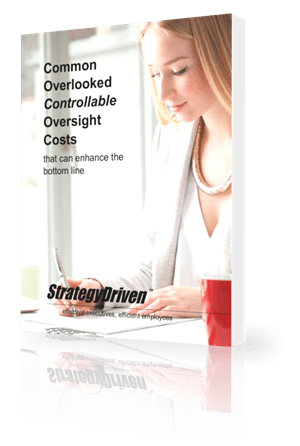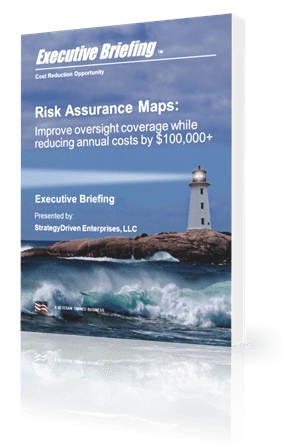10 Top Enterprise Risk Management Trends In 2025
Organizations facing multifaceted challenges must navigate through technological disruptions, geopolitical tensions, climate crises, and workforce transformations simultaneously.
As we move further into 2025, enterprise risk management approaches are undergoing dramatic evolution to address this heightened complexity. The convergence of digital, environmental, and societal factors has created risk profiles that traditional approaches simply cannot handle effectively.
AI-Powered Predictive Risk Intelligence: The New Frontier
Artificial intelligence has transformed from a buzzword to an essential component of sophisticated risk management. Advanced machine learning algorithms now detect subtle patterns invisible to traditional methods, enabling organizations to anticipate problems before they materialize. These systems continuously analyze vast datasets spanning internal operations, market conditions, and external events to provide comprehensive risk visualization.
Risk management professionals now leverage cognitive tools that not only identify potential threats but also recommend mitigation strategies tailored to organizational context. What’s particularly notable is how AI has transformed from being viewed primarily as a risk itself to becoming a powerful risk management advantage.
Integrated Enterprise Risk Frameworks for the Digital Age
Breaking Down Traditional Risk Silos Through Unified Platforms
The days of department-specific risk management approaches are rapidly fading. Modern contract risk management software solutions now enable organizations to centralize risk data across traditional silos, creating unprecedented visibility across the enterprise. These platforms integrate financial, operational, compliance, and strategic risks into unified dashboards that provide leadership with a comprehensive understanding.
Dynamic Risk Governance Models Enabling Agile Responses
Risk governance structures themselves have evolved significantly to accommodate new risk categories and greater decision velocity. These governance models incorporate diverse perspectives from across the organization while maintaining clarity about escalation paths when rapid action is needed. The most effective models balance formal oversight requirements with operational flexibility, enabling organizations to respond to emerging risks without bureaucratic delays.
Cybersecurity Risk Evolution: Beyond Traditional Defense
As cyber threats grow more advanced, traditional security measures are no longer sufficient to protect critical systems. Organizations must adapt to an evolving threat landscape where attackers leverage sophisticated techniques, including AI-driven attacks and quantum computing vulnerabilities. A proactive, multi-layered cybersecurity approach is essential to safeguarding sensitive data and maintaining operational resilience.
Advanced Persistent Threats and Quantum Computing Vulnerabilities
The cybersecurity landscape continues its rapid evolution, with sophisticated threat actors developing increasingly complex attack methods. Critical infrastructure and operational technology face particularly concerning vulnerabilities as digitization expands throughout industrial systems.
Traditional perimeter defenses no longer suffice in this environment. Organizations must prepare for quantum-computing threats by implementing post-quantum cryptography and developing fundamental resilience against attacks that may bypass conventional security measures.
Zero-Trust Security Models Becoming Standard Practice
The assumption that internal networks are inherently trustworthy has collapsed. Zero-trust security models—predicated on the principle that no user or system should be trusted by default—have seen adoption increase by 40% in 2023 among enterprises. These approaches require continuous verification of every user and system regardless of location, dramatically reducing the attack surface available to threat actors.
Forward-thinking organizations have integrated cybersecurity risk management into their broader enterprise frameworks, recognizing that digital threats can impact every aspect of operations. This holistic approach ensures cybersecurity considerations factor into strategic business decisions rather than being treated as purely technical matters.
Climate Risk Management: From Compliance to Strategic Advantage
Climate risk has rapidly evolved from a peripheral concern to a central strategic consideration. Seventy percent of corporations now conduct climate scenario analyses as part of their strategic risk assessments, examining both physical risks (extreme weather, resource availability) and transition risks (policy changes, market shifts).
Organizations integrate sophisticated climate data with business continuity planning to develop robust responses to multiple potential scenarios. These analyses increasingly inform capital allocation, site selection, and long-term strategic planning—moving well beyond mere regulatory compliance.
Rather than viewing these requirements as compliance burdens, leading organizations recognize opportunities to gain strategic advantage through transparent, sophisticated climate risk management. By proactively addressing these challenges, they strengthen stakeholder confidence while protecting operational resilience.
Supply Chain Risk Resilience Through Digital Transformation
Blockchain and digital twins are transforming supply chain visibility, addressing vulnerabilities that have become increasingly apparent in recent years. In response, 62% of supply chain executives have implemented blockchain technology to enhance transparency and traceability across multi-tier supplier networks, allowing them to identify potential disruptions before they escalate.
Digital twins, which serve as virtual replicas of physical supply chain components, enable real-time monitoring and advanced scenario planning. When integrated with contract risk management software, these technologies provide comprehensive supplier oversight and early warning capabilities, helping organizations mitigate risks proactively.
Geographical diversification has also emerged as a key strategy for strengthening supply chain resilience. This shift underscores a growing recognition that supply chain efficiency must be balanced with resilience. Organizations are now adopting sophisticated network design approaches that optimize cost, speed, and reliability, moving away from pre-pandemic supply chain strategies that primarily prioritize cost minimization.
FAQs
How can AI improve enterprise risk management in 2025?
AI enhances risk management by detecting hidden patterns, predicting potential threats, and recommending mitigation strategies through advanced machine learning and real-time data analysis.
Why is zero-trust security essential for modern cybersecurity risk management?
Zero-trust security eliminates implicit trust, requiring continuous verification of all users and systems to prevent unauthorized access and reduce the attack surface for cyber threats.
How do blockchain and digital twins enhance supply chain risk resilience?
Blockchain improves transparency and traceability, while digital twins provide real-time monitoring and scenario planning, helping organizations anticipate disruptions and optimize supply chain operations.
Conclusion
As enterprise risk management continues its transformation, organizations must think differently about their approaches. The convergence of technological capabilities, regulatory expectations, and stakeholder demands creates both challenges and opportunities.
Leaders who successfully navigate this landscape will build organizations capable of not merely surviving disruption but thriving through it. By embracing predictive intelligence, integrated frameworks, and sophisticated governance models, forward-thinking companies will convert risk management from a compliance necessity to a strategic advantage.
In a world of escalating complexity, this capability may ultimately represent the difference between organizational resilience and vulnerability in the face of unprecedented change.











Leave a Reply
Want to join the discussion?Feel free to contribute!